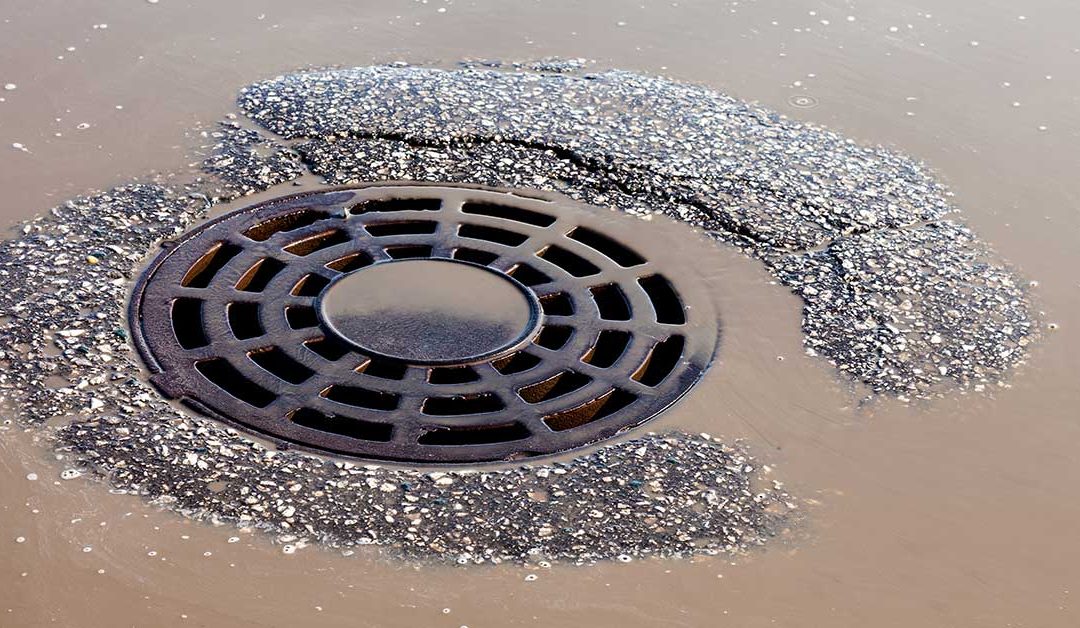April showers are still a while off but now is a good time to start thinking about ways to help keep our rivers and lakes clean by managing stormwater.
Stormwater is what ends up on the ground and in our waterways as the result of rainfall or snowmelt. Stormwater picks up road salt, dirt, oil, grease and trash as it moves across hard surfaces like streets, sidewalks and driveways. That runoff flows into drainage pipes leading to rivers and lakes. Depending on distance, obstacles and the amount of rain or snowmelt in one weather event, stormwater can reach natural waterways gradually or quite suddenly.
Polluted runoff from stormwater can result in beach closures, waterborne illnesses and degraded habitat for fish and wildlife. This hurts the environmental and economic health of communities, particularly those along the coast of Lake Huron that depend on clean water for recreation and tourism.
Managing stormwater is best done where it falls. At the residential level, this can involve using a rain barrel to collect runoff from the roof of a home for later use watering plants or gardens. Landscaping with native vegetation provides deep root systems for absorbing water while attracting birds and pollinating insects like butterflies. Any kind of native landscaping for that matter, be it trees, flower beds, shrubs or grass, provides a buffer between stormwater and natural waterways.
Even in winter, moving snow off driveways and onto the yard can reduce runoff come spring thaw. In summer, washing your car on the lawn instead of in the driveway achieves the same goal.
On a city scale, gutters and storm sewers carry runoff away from streets and sidewalks through underground pipes that empty into lower lying areas — in many cases draining into rivers and lakes. Unlike sanitary sewers which connect homes and businesses to a wastewater treatment plant, discharge from storm sewers is not treated, giving pollution a direct route to water bodies.
To ensure the long-term health of the region’s lakes and rivers, Huron Pines has partnered with inland communities like Grayling, Roscommon, Rose City and Lewiston to reduce pollution and flooding caused by stormwater. Our focus in recent years has been on coastal cities including Alpena, Au Gres, East Tawas and Rogers City.
The first step in a partnership is to conduct a citywide assessment of runoff — how much there is on average, where it goes, amount that gets absorbed by the ground and how much drains into rivers and lakes. Once that’s complete, a plan of action can be developed.
One such assessment was done for Rogers City back in 2006 and Huron Pines Watershed Project Manager Samantha Nellis is carrying that relationship forward. Nellis and the city are working together to identify next steps based on the community’s needs, including possible green infrastructure to reduce runoff from a road and parking lot near the lakeshore. The goal is to address past problems with water quality at the harbor and swimming beach caused by stormwater runoff.
Nellis enjoys seeing community partners engaged in efforts to improve water quality.
“Scott McLennan, the mayor of Rogers City, has been a strong advocate for environmentally focused initiatives in the city,” Nellis said. “He has helped keep the momentum going for stormwater management.”
Down the coast, on the north end of Saginaw Bay, the city of Au Gres is also working through its own stormwater management process to help protect recreation and water quality in Lake Huron. At Au Gres-Sims School, students in Luke Freeman’s science classes are applying what they’ve learned about stormwater to enhance their school grounds and a community park. In partnership with Huron Pines, Michigan State University Extension and Michigan Sea Grant, students designed and built a 300-square-foot rain garden on their campus in May 2019. The area of native plants and wildflowers doesn’t just capture and filter stormwater from the nearby parking lot — it also serves as a proving ground for Freeman’s lessons in data collection, soil surveys and water quality.
Freeman, a former fisheries biologist turned teacher, gushes about his students when he discusses the project.
“I love seeing my kids get excited about what we do,” he said. “Anytime I can apply lessons from my time as a researcher to the real world, I jump on that opportunity. This has changed the way I look at education and it has given my students a sense of ownership in their community.”
His students haven’t stopped there. On the evening of Feb. 26 in the school’s cyber cafe, they will organize and lead a community visioning meeting to discuss the future of Au Gres Riverside Park. Inspired by the success of their rain garden, students are planning a similar effort at the park alongside city plans for a splash pad and playground. The students already applied for and won a $1,000 grant from the Saginaw Bay Watershed Initiative Network to fund their effort and celebrated this great achievement with a pizza party.
“This meeting will give students a chance for a face-to-face with their community and to see they are supported,” Freeman said. “I want to give them the opportunity to be leaders and to know what they’re doing is right.”
Students empowered and working toward cleaner, healthier water — that’s definitely worth celebrating.

